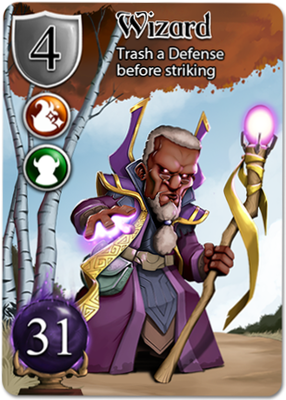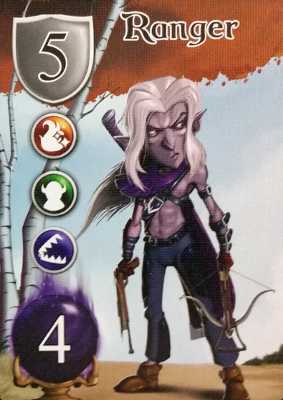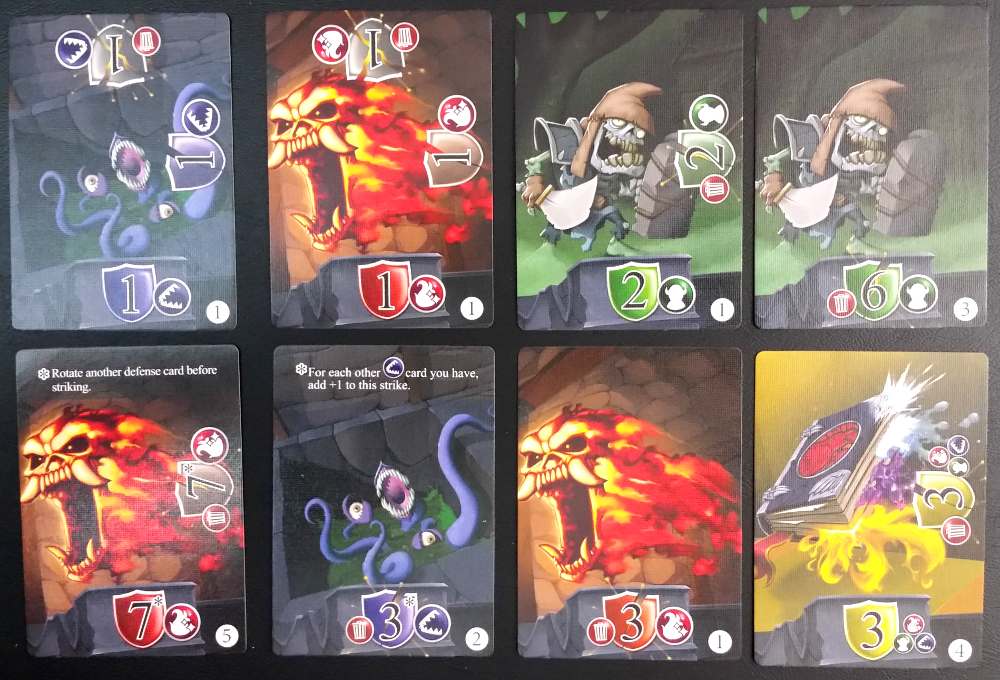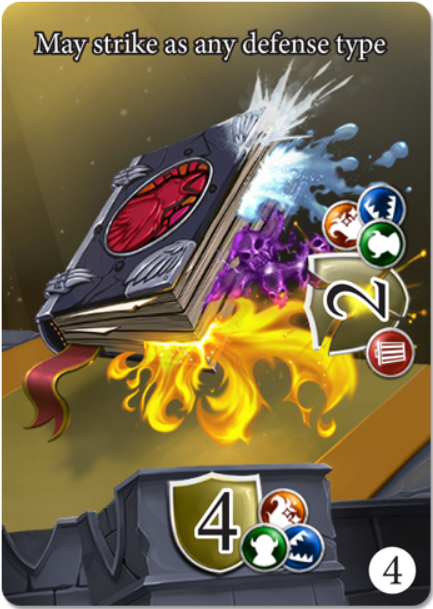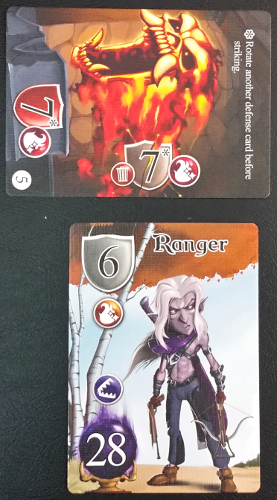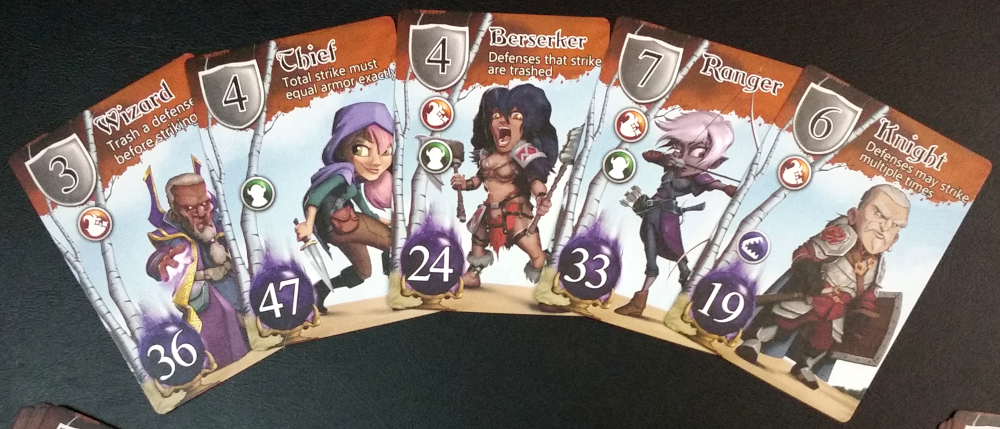Griss made mental notes, nodding along as the diminutive goblin at his side rattled on about the castle’s preparations. “Yes, yes. Lichy Griss will be most happy with the traps! Big boss lady will too. Very happy, yes, yes. Why…”
“If boss lady isn’t happy,” Griss interrupted, “you will be the first to know.” He let that hang in the air for a moment. Nothing brought out goblin ingenuity like fear. “Now, are you sure everything is set? They’ll be here soon.”
“Yes, yes, lichy Griss! Everything ready.”
“The spike pits?”
“Extra rusty and sharp. Lost 3 gobbos checking.”
“And the flame hounds?”
“Super hungry. Quite mad.”
“The explosive runes?”
“All ready for booming. Don’t take south stairs, no no!”
“Well…good job Krixk,” Griss found himself saying. “Maybe you’ll survive the week yet. Maybe we all will.”
“But lichy Griss…aren’t you already dead?”
The Premise
In Dark Dealings, players find out first hand that being an evil overlord isn’t as easy as it’s made out to to be. A wave of annoying heroes are storming their respective lairs, and players must lay out traps to stop them in an attempt to be the last overlord standing.
The Rules
Dark Dealings is a quick card drafting game playable right out of the box. It consists of two decks: the Hero Deck, reflecting the threats adventurers pose to the players, and the Defense Deck, which are traps used to stop them.
To begin the game, each player receives nine Hero cards. The first player is determined randomly.
Dark Dealings takes place over three phases: the Hero Phase, the Defense Phase, and the Combat Phase. In the Hero Phase, players draft Hero cards. Each person chooses two Hero cards and passes the remaining ones to the next player. This is repeated three more times until everyone has chosen eight Heroes; the final card of each hand is discarded.
Every Hero has a special class ability, a defense value, a list of which types of Defenses they’re vulnerable to, and a Challenge Value, which determines the order they resolve during the Defense Phase.
At the beginning of the Defense Phase a number of Defense cards are revealed equal to twice the number of players. Each player then simultaneously chooses and reveals two of their Hero cards. Next, players take turns choosing Defense cards to help them kill their Heroes, going in order from the character with the highest Challenge Value to the lowest.
Most Defense cards contain one or more shields, each representing a single attack. These state the strength of the attack, as well as one of the game’s three defense types: Traps, Minions, or Spells.
Once chosen, Defense cards are put in front of the player and their Heroes are stacked face-down. When all Defenses are drafted, another wave of Defense cards are revealed and players choose another pair of Heroes from their hand. This process is repeated until everyone has eight Defenses.
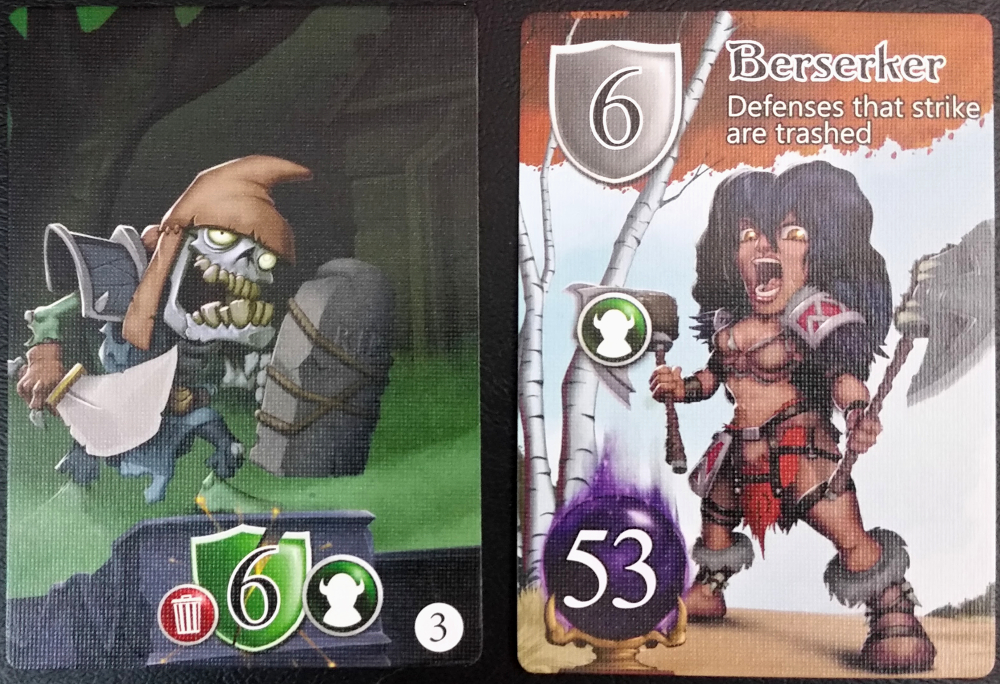
This Defense card matches both the strength and type of the Berserker Hero, giving them a one-way ticket to permanent retirement
Finally, in the Combat Phase players in turn order reveal their topmost face-down Hero and must attempt to defeat it. They may use any number of attacks whose total is greater than or equal to the Hero’s defense value, but they may only use attack types matching that Hero’s vulnerabilities. If successful, the Hero is discarded, as are any Defense cards that have used its final attack. Otherwise any Defense card used rotates to its next attack.
If a player is unable to defeat their current Hero, however, they lose.
Turns continue in this manner until there is only one player left alive. That player is the winner and, clearly, the most cunning evil overlord still breathing.
A Three-Layer Evil Cake
Many games, particularly those of the Euro variety, simply hand you the rule book and toss you into the deep end. It’s understandable – part of the appeal to that style of game is discovering the strategies and combos on your own.
Other games, like Dark Dealings, take a more gradual approach, with each phase of the game building upon the ones preceding. The first – and shortest – phase focuses exclusively on drafting Hero cards. It’s quick, simple, and affords you the ability to make basic but important choices regarding which Heroes you want in your possession.
The second phase expands this idea both mechanically and conceptually by pairing your Heroes with an array of Defense cards needed to defeat them. This is done through more drafting but with the added twist of a changing player order. Everything in this game hinges on your ability to have the defenses necessary to defeat your own Heroes, and while there’s plenty of variety to the cards, there’s also strategy at this stage in assuring that your slate of do-gooders can be beaten.
Indeed, even for brief game, Dark Dealings makes your decisions matter. Every choice that you make at an earlier point in the game feeds later outcomes, and it has a high degree of player agency. The game also strives to avoid making a player feel overly punished for their choices if things don’t work out.
Case in point: although the outcome can feel unpredictable at times, Dark Dealings has a notably low degree of luck to it. The only real randomness comes from which Defense cards get revealed. Otherwise, nearly everything is based on your actions, which is impressive for a 20ish minute card game. Because of this, you can count on Strikers to be fully on board with proving their mettle as the best…er…worst evil overlord.
A Surprise Assault Of Little Grey Cells
One of the most interesting – and occasionally frustrating – things about Dark Dealings, however, is how the game completely deviates from player expectations. Because the first 2/3 of the game focuses almost exclusively on card drafting and tactical decisions that the game incorporates around it, you’d naturally expect the final phase to continue that trend.
Except, it doesn’t.
Rules-wise, combat in Dark Dealings is straightforward: either you use the right assortment of traps to defeat the Hero and move on, or you lose. To accomplish this, the game springs a trap of its own: not by introducing a more complex take on earlier mechanics, but by introducing an unforeseen memory component to the mix. Suddenly, being able to remember the order of your actions up to that point becomes a key element of your path to victory.
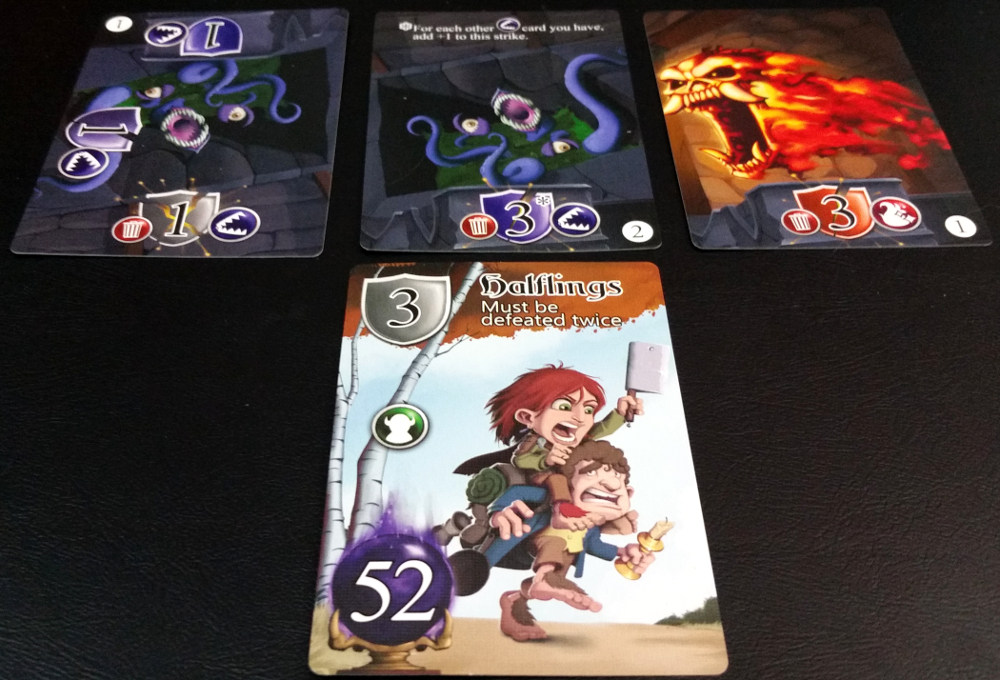
Forgetting these Halflings can only be harmed by Minion defenses = this player just lost to some angry Hobbits
Here’s why: you must attempt to defeat the Heroes in the reverse order that you used them during the Defense phase. This means that while it’s easy to keep track of the first couple Heroes you’ll face – the last ones you saw previously – it becomes increasingly tricky to recall the order of the Heroes at the bottom of your deck. Of course, you’re not allowed to peek.
Although you only have eight Heroes running around, Dark Dealings devilishly shifts the focus enough to muddle even stalwart planners. In this game you’re already tasked with finding the right Defense cards to fend off your Heroes, using those defenses on the right characters, and dealing with the added wrinkles of the Hero abilities themselves. Juggling all of that information alone can be surprisingly challenging for such a short game, let alone also having to factor in the timing of those decisions.
So, even assuming that you’re able to gather enough Defenses to cover your entire roster of Heroes (which isn’t guaranteed), the margin for error is tiny. If you use a particular Defense on the wrong Hero too early, for instance, it’s possible you won’t be prepared when the Hero you’d initially saved that trap for comes knocking.
Moreover, not only does this gameplay shift tend to catch people off-guard, especially on initial playthroughs, but it can also feel disjointed. The tonal shift from a focus on pure drafting and matching Hero vulnerabilities with the right traps to also including a memory aspect can be confounding.
It’s the complexity of those factors that draw Tacticians into this fight, at least for awhile. The logic puzzle thinking and tactical maneuvering required to maximize your chances of victory easily scratches an itch for calculated thinking. That said, because the game lacks the time for or necessity of planning a lengthy strategy, it likely won’t hold their attention in the long run.
Likewise, while it’s possible for you to win without an extensive strategy, achieving victory demands that you invest in some sort of conventional planning, much to the dismay of adventure-seeking Daredevils. Dark Dealings may be light, but it’s not the kind of game that rewards whimsical decision-making. Unconventional tactics are possible, such as drafting every Halfling Hero you can, but it won’t matter if you don’t also gather the matching Defense cards to stop them. As simple as it is, in Dark Dealings laying traps requires at least some forethought.
Remarkably, however, as much as the game asks for a multi-layered degree of decision-making, Dark Dealings never becomes so complicated that it corrupts its lightweight, casual appeal. With a mere handful of rules and playthroughs under a half hour, Dark Dealings does a skillful job as a simple game with a decent amount of substance and a fair amount of replayability.
As a result, you can expect Socializers to enjoy wanting to be as evil as they can be. Even though the game requires that you pay attention to your choices, it pairs that with modest in-game interaction and low player downtime. On the other hand, with its quick sessions and focus on survival over expansion, there is little here to entice Architects. If anything, they’d be more likely to side with the do-gooders.
A Friend, A Bear, And You
The game’s short play time is also why player elimination never becomes an issue. No one sits idly for long, and games rarely make it through all eight Heroes. Ultimately in Dark Dealings, you usually aren’t trying to survive to the end so much as trying to outlast your opponents.
In fact, the only real downtime in Dark Dealings is with combat resolution. While minor, it does take a moment to resolve each round of combat, especially with more overlords at the table. The tradeoff, though, is that although it functions with fewer players, the game is more dynamic at higher player sizes.
In theory it’s possible to offset even this downtime by having everyone resolve their Hero each round simultaneously. This will speed the game up, true, but doing so inevitably trades one caveat for another, as doing that removes the game’s mild suspense and entertainment of seeing who lives and who becomes carrion fodder.
Thus, it may not be an ideal solution for those who want to experience what little thematic resonance the game has. Dark Dealings boasts colorful and diverse artwork, and the theme is well integrated throughout the different phases of the game, from the Hero traits to the central premise of unleashing nefarious traps on said Heroes. However, although it’s not ‘tacked-on’, the game isn’t incredibly deep on either theme or flavor, and so even something as simple as accelerating the Combat Phase could diminish that further. Either way, expect Immersionists to avoid these lands entirely.
The Takeaway
Dark Dealings is a well-crafted Filler Game that offers respectable amounts of substance and replay value. The game cleverly builds upon a series of seemingly-simple decisions that all inform upon one another in a subtly layered way. It packs a lot into its small box frame while keeping the flow of the game quick and concise, culminating in a payoff that’s both enjoyable and fairly complex for a 20-25 minute game. The game does run into some trouble, however, as it doesn’t really convey that success relies on equal parts strategy and memorization, which players often don’t expect. Still, thanks to excellent artwork and an irreverent central premise, the game avoids ever taking itself too seriously. In the end, Dark Dealings reminds you that sometimes it’s good to be bad – even if in small doses.
Dark Dealings is a product of Nevermore Games.
Cardboard Republic Snapshot Scoring (Based on scale of 5):
Artwork: 4
Rules Clarity: 5
Replay Value: 3.5
Physical Quality: 4
Overall Score: 3.5
Photo Credits: Yellowstone Bear by Brad Schafer.

